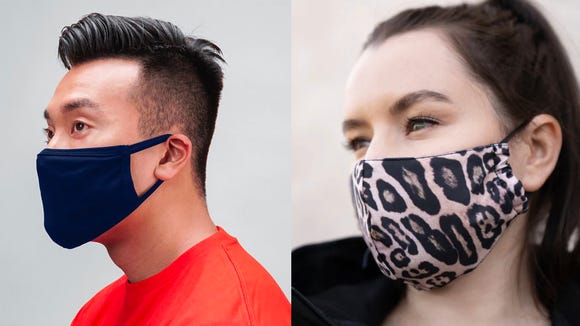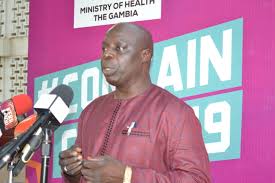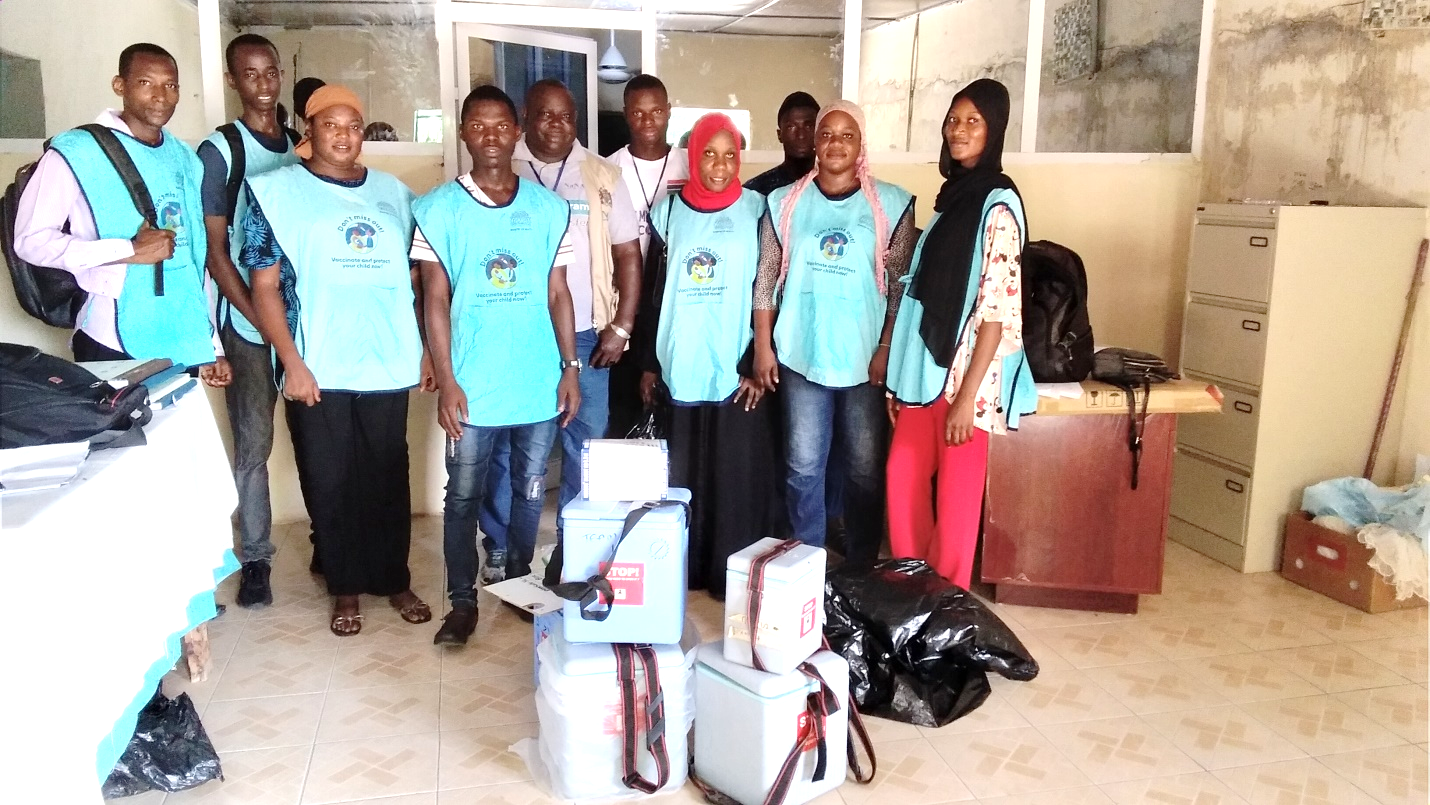INTRODUCTION
This Article provides advice on the use of masks in communities, during home care, and in health care settings in areas that have reported cases of COVID-19. It is intended for individuals in the community, public health and infection prevention and control (IPC) professionals, health care managers, health care workers (HCWs), and community health workers.
Current information suggests that the two main routes of transmission of the COVID-19 virus are respiratory droplets and contact. Respiratory droplets are generated when an infected person coughs or sneezes.
Any person who is in close contact (within 1 m) with someone who has respiratory symptoms (coughing, sneezing) is at risk of being exposed to potentially infective respiratory droplets. Droplets may also land on surfaces where the virus could remain viable; thus, the immediate environment of an infected individual can serve as a source of transmission (contact transmission)
Current evidence suggests that most disease is transmitted by symptomatic laboratory confirmed cases. The incubation period for COVID-19, which is the time between exposure to the virus and symptom onset, is on average 5-6 days, but can be as long as 14 days.
During this period, also known as the “pre-symptomatic” period, some infected persons can be contagious and therefore transmit the virus to others. In a small number of reports, pre-symptomatic transmission has been documented through contact tracing efforts and enhanced investigation of clusters of confirmed cases. This is supported by data suggesting that some people can test positive for COVID-19 from 1-3 days before they develop symptoms.
Thus, it is possible that people infected with COVID-19 could transmit the virus before symptoms develop. It is important to recognize that pre-symptomatic transmission still requires the virus to be spread via infectious droplets or through touching contaminated surfaces.
Wearing a medical mask is one of the prevention measures that can limit the spread of certain respiratory viral diseases, including COVID-19. However, the use of a mask alone is insufficient to provide an adequate level of protection, and other measures should also be adopted. Whether or not masks are used, maximum compliance with hand hygiene and other IPC measures is critical to prevent human-to-human transmission of COVID-19. WHO has developed guidance on IPC strategies for home care and health care settings for use when COVID-19 is suspected.
THE USE OF FACE MASKS AT HOME SETTING
Persons with suspected COVID-19 or mild symptoms should:
• Self-isolate if isolation in a medical facility is not indicated or not possible
• Perform hand hygiene frequently; using an alcohol-based hand rub if hands are not visibly dirty or soap and water when hands are visibly dirty;
• Keep a distance of at least 1 m from other people;
• Wear a medical mask as much as possible; the mask should be changed at least once daily. Persons who cannot tolerate a medical mask should rigorously apply respiratory hygiene (i.e. cover mouth and nose with a disposable paper tissue when coughing or sneezing and dispose of it immediately after use or use a bent elbow procedure and then perform hand hygiene.)
•Avoid contaminating surfaces with saliva, phlegm, or respiratory secretions.
• Improve airflow and ventilation in their living space by opening windows and doors as much as possible.
Caregivers or those sharing living space with persons suspected of COVID-19 or with mild symptoms should:
• Perform hand hygiene frequently, using an alcohol-based hand rub if hands are not visibly dirty or soap and water when hands are visibly dirty;
• Keep a distance of at least 1 meter from the affected person when possible;
• Wear a medical mask when in the same room as the affected person;
• Dispose of any material contaminated with respiratory secretions (disposable tissues) immediately after use and then perform hand hygiene.
• Improve airflow and ventilation in the living space by opening windows as much as possible
THE USE OF FACE MASK IN A HEALTH CARE SETTING
Symptomatic people visiting a health care setting should:
• Wear a medical mask while waiting in triage or other areas and during transportation within the facility;
• Not wear a medical mask when isolated in a single room, but cover their mouth and nose when coughing or sneezing with disposable paper tissues. Tissues must be disposed of appropriately, and hand hygiene should be performed immediately afterwards.
Health care workers should:
• Wear a medical mask when entering a room where patients with suspected or confirmed COVID-19 are admitted.
• Use a particulate respirator at least as protective as a US National Institute for Occupational Safety and Health certified N95, European Union standard FFP2, or equivalent, when performing or working in settings where aerosol-generating procedures, such as tracheal intubation, non-invasive ventilation, tracheotomy, cardiopulmonary resuscitation, manual ventilation before intubation, and bronchoscopy are performed.
• Full infection prevention and control guidance for health care workers is provided
MASK MANAGEMENT
For any type of mask, appropriate use and disposal are essential to ensure that they are effective and to avoid any increase in transmission.
The following information on the correct use of masks is derived from practices in health care settings.
Place the mask carefully, ensuring it covers the mouth and nose, and tie it securely to minimize any gaps between the face and the mask.
• Avoid touching the mask while wearing it.
• Remove the mask using the appropriate technique: do not touch the front of the mask but untie it from behind.
• After removal or whenever a used mask is inadvertently touched, clean hands using an alcohol-based hand rub or soap and water if hands are visibly dirty.
• Replace masks as soon as they become damp with a new clean, dry mask.
• Do not re-use single-use masks.
• Discard single-use masks after each use and dispose of them immediately upon removal.
REFERENCE:
World Health Organization. Infection prevention and control during health care when COVID-19 is suspected: interim guidance, (accessed 29 January 2020).
Wei WE, Li Z, Chiew CJ, Yong SE, et al. Presymptomatic Transmission of SARS-CoV-2 — Singapore, January 23–March 16, 2020. MMWR, 1 April 2020/69.
Cluster randomised controlled trial to examine medical mask use as source control for people with respiratory illness. BMJ Open 2016;6(12):e012330. doi: 10.1136/bmjopen-2016-012330. [published Online First: 2017/01/01]
MacIntyre CR, Zhang Y, Chughtai AA, et a
Written by Momodou Salieu Jallow
Jainaba Barrow
UTG students .
School of public and environmental health.





